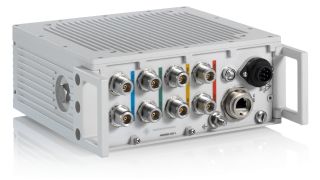Next-generation counter-drone capability for automatic detection of Wi-Fi controlled drones
Affordable and easy to use, Wi-Fi controlled drones con¬tinue to grow in popularity around the world, making them a significant threat to critical national infrastructure and special events.
Although they have limited range and endurance, more advanced Wi-Fi controlled drones can automatically switch between Wi-Fi channels within the same band, typically the 2.4 GHz or 5 GHz industrial, scientific and medical (ISM) bands, making them particularly difficult to find and fix.
However, national regulations require radio-controlled drones to emit a remote identification (Remote ID) signal which can include the serial number, GPS coordinates, speed, altitude and timestamp of a drone as well as the location of its operator.
Thanks to emerging technologies, these types of communications protocols can now be captured and decoded by more advanced counter-drone capabilities on the market, a capability which allows law enforcement and security agencies to identify non-cooperative drone operators at the earliest opportunity.








